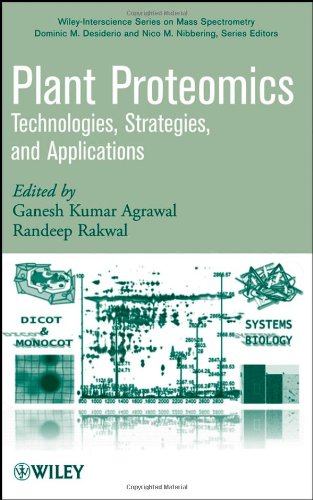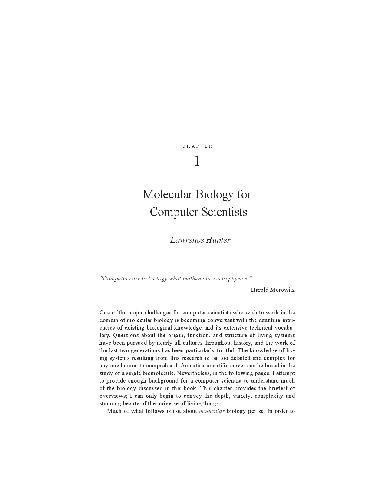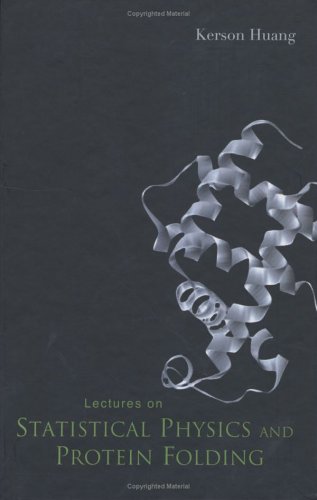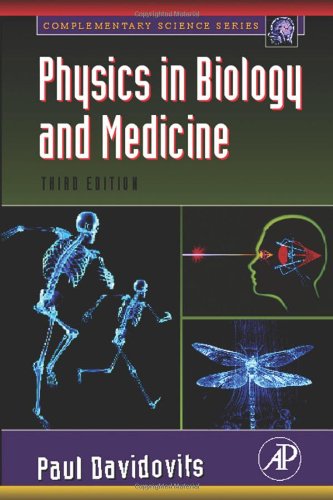Randeep Rakwal, Ganesh K. Agrawal0470069767, 978-0-470-06976-9
Table of contents :
PLANT PROTEOMICS……Page 3
CONTENTS……Page 7
PREFACE……Page 21
CONTRIBUTORS……Page 25
ACRONYMS AND ABBREVIATIONS……Page 31
1 AN INTRODUCTION TO PROTEOMICS: APPLICATIONS TO PLANT BIOLOGY……Page 47
1.1 Proteomics Defined……Page 48
1.2 Proteomics Applied……Page 51
References……Page 52
PART I TECHNOLOGIES……Page 55
2.1 Introduction and Brief Bibliographic Review……Page 57
2.2 SDS-PAGE……Page 58
2.3 IEF……Page 63
2.4 2D Maps……Page 68
2.5 Conclusions……Page 74
2.6 Five-Year Viewpoint……Page 75
References……Page 76
3.1 Introduction and Brief Bibliographic Review……Page 79
3.2 Instrumentation……Page 80
3.3 MALDI……Page 81
3.5 Mass Analyzers……Page 82
3.6 Ion Detectors……Page 84
3.7 Sample Preparation……Page 85
3.8 Protein Identification……Page 86
References……Page 90
4.2 Strategies For Activity-Based Protein Profiling (ABPP)……Page 93
4.3 Case Study: Development of Molecular Tools Targeting Plant Kinases……Page 99
4.4 Conclusions……Page 103
References……Page 104
5.1 Protein Compartmentalization in Plant Cells……Page 107
5.2 Experimental Determination of Protein Localization……Page 112
5.3 In Vivo Imaging Approaches to Protein Localization and Interaction……Page 115
5.4 Plant Cell Cultures for Studying Protein Localization……Page 119
5.5 Protein–Protein Interaction In Vivo: FRET……Page 120
References……Page 123
6.1 Introduction and Brief Bibliographic Review……Page 129
6.2 Methodology and Strategy……Page 132
6.4 Conclusions……Page 133
References……Page 135
7.1 Introduction and Brief Bibliographic Review……Page 137
7.2 Separation Technology……Page 139
7.3 MS Technology……Page 141
7.4 Bioinformatics and Data Mining……Page 143
7.5 Differential Peptide Display……Page 144
7.6 ID LC–MALDI……Page 145
7.8 Applications……Page 146
7.9 Peptides and Proteases……Page 147
7.10 Conclusions……Page 148
References……Page 149
PART II COMPUTATIONAL PROTEOMICS……Page 151
8.1 Introduction and Brief Bibliographic Review……Page 153
8.2 Methodology and Strategy……Page 158
8.3 Experimental Results and Applications……Page 166
8.4 Conclusions……Page 168
8.5 Five-Year Viewpoint……Page 169
References……Page 170
9.1 Introduction……Page 173
9.2 Database Searching……Page 174
9.3 Peptide De Novo Sequencing……Page 181
9.4 Conclusions and Five-Year Viewpoint……Page 184
References……Page 185
PART III EXPRESSION PROTEOMICS……Page 187
10.1 Introduction and Brief Bibliographic Review……Page 189
10.2 Methodology and Strategy……Page 192
10.3 Experimental Results and Applications……Page 193
10.5 Five-Year Viewpoint……Page 206
References……Page 207
11.1 Introduction and Brief Bibliographic Review……Page 211
11.2 Methodology and Strategy……Page 213
11.3 Experimental Results and Applications……Page 218
11.5 Five-Year Viewpoint……Page 223
References……Page 224
12.1 Introduction and Brief Bibliographic Review……Page 225
12.2 Proteomics of Model Legume Medicago truncatula……Page 226
12.4 Proteomics of Soybean, Glycine max……Page 229
12.5 Proteomics of Alfalfa, Medicago sativa……Page 230
12.6 Conclusions……Page 232
References……Page 233
13.1 Introduction……Page 237
13.2 Proteomics of Developing Seeds……Page 238
13.3 Proteomics of Mature Seeds……Page 242
13.4 Proteomics of Germinating Seeds……Page 244
13.5 Proteomics of Somatic Embryogenesis……Page 247
13.6 Metabolic Control of Seed Development and Germination……Page 249
13.7 Conclusions……Page 250
References……Page 251
14.1 Introduction……Page 253
14.2 Fractionation and Analysis of Endosperm Proteins……Page 254
14.3 The Endosperm Proteome……Page 256
14.4 The Amyloplast Proteome……Page 261
14.6 Five-Year Viewpoint……Page 265
References……Page 266
15.1 Introduction……Page 269
15.2 Application of Proteomics in the Study of Root Development……Page 271
15.3 Proteome Analysis of Response to Plant Hormones……Page 278
15.5 Action to Microbe–Plant Symbiosis……Page 279
15.6 Proteome to Cope With Environmental Stresses……Page 280
15.7 Conclusions and Five-Year Viewpoint……Page 282
References……Page 283
16.1 Introduction……Page 285
16.2 Proteomics Studies in Plant Leaf……Page 286
16.4 Five-Year Viewpoint……Page 293
References……Page 294
17.1 Introduction and Brief Bibliographic Review……Page 295
17.2 Methodology and Strategy……Page 297
17.4 Five-Year Viewpoint……Page 304
References……Page 305
18.1 Introduction……Page 307
18.2 Bibliographic Review: Pollen Development and Function……Page 308
18.3 Methodology and Experimental Results……Page 310
18.4 Conclusions……Page 317
References……Page 318
19.1 Introduction……Page 321
19.2 Brief Bibliographic Review……Page 322
19.3 Strategies and Methodologies……Page 323
19.4 Experimental Results and Applications……Page 326
19.5 Conclusions……Page 332
References……Page 333
PART IV ORGANELLE PROTEOMICS……Page 337
20.1 Introduction……Page 339
20.3 Specific Methodology and Strategies……Page 342
20.4 Experimental Results and Applications……Page 346
20.6 Five-Year Viewpoint……Page 350
References……Page 352
21.1 Introduction and Brief Bibliographic Review……Page 355
21.2 Specific Methodologies and Strategies (Box 21.1)……Page 356
21.3 Experimental Results and Applications: Toward an Informative Database of the Plant PM Proteome……Page 365
21.4 Conclusions……Page 369
21.5 Five-Year Viewpoint……Page 370
References……Page 371
22.1 Introduction and Brief Bibliographic Review……Page 373
22.2 Methodology and Strategy……Page 374
22.3 Experimental Results and Discussion……Page 376
22.4 Conclusions……Page 381
22.5 Five-Year Viewpoint……Page 382
References……Page 383
23.1 Introduction……Page 385
23.3 Methodology and Strategy……Page 387
23.4 Experimental Results and Applications……Page 390
23.6 Five-Year Viewpoint……Page 394
References……Page 395
24.1 Introduction……Page 397
24.2 Etioplast Proteome Analysis……Page 398
24.3 Conclusions……Page 404
References……Page 405
25.1 Introduction……Page 407
25.2 Brief Bibliographic Review……Page 409
25.3 Methodology and Strategy……Page 410
25.4 Experimental Results and Applications……Page 415
25.6 Five-Year Viewpoint……Page 419
References……Page 420
26.1 Introduction……Page 423
26.3 Specific Methodologies and Strategies……Page 425
26.4 Experimental Results and Applications……Page 429
26.5 Conclusions……Page 432
26.6 Five-Year Viewpoint……Page 433
References……Page 434
27.1 Introduction……Page 437
27.2 Bibliographic Review: Role of Proteomics in Understanding Biology of Plant Vacuoles……Page 439
27.3 Methodology and Strategies……Page 441
27.4 A Case-Study of Label-Free Quantitative Proteomics……Page 447
27.5 Conclusions……Page 448
27.6 Five-Year Viewpoint……Page 449
References……Page 450
28.1 Introduction and Brief Bibliographic Review……Page 453
28.2 Methodology and Strategy……Page 454
28.3 Conclusions……Page 459
28.4 Five-Year Viewpoint……Page 460
References……Page 461
PART V MODIFICATION PROTEOMICS……Page 465
29.1 Introduction……Page 467
29.2 Phosphoprotein and Phosphopeptide Enrichment……Page 468
29.3 Detection of Protein Phosphorylation and Determination of Phosphorylation Sites……Page 473
29.4 MS-Based Approaches……Page 478
29.5 Biological Implications of Protein Multisite Phosphorylation in Plants……Page 480
29.6 Large-Scale Proteomics Studies……Page 483
References……Page 484
30.1 Introduction……Page 489
30.2 Brief Bibliographic Review……Page 490
30.3 Specific Methodologies and Strategies……Page 491
30.4 Experimental Results and Applications……Page 494
30.5 Conclusions……Page 497
References……Page 498
31.1 Introduction……Page 501
31.2 Brief Bibliographic Review……Page 502
31.3 Methodology and Strategy……Page 504
31.4 Conclusions……Page 511
31.5 Five-Year Viewpoint……Page 512
References……Page 513
32.1 Introduction and Brief Bibliographic Review……Page 515
32.2 Specific Methodologies and Strategies……Page 519
32.3 Experimental Results and Applications……Page 523
32.4 Conclusions and Five-Year Viewpoint……Page 527
References……Page 528
33.1 Introduction and Brief Bibliographic Review……Page 531
33.2 Methodology and Strategy……Page 532
33.3 Experimental Results on Plant MAPK Downstream Signaling and Applications……Page 540
33.5 Five-Year Viewpoint……Page 542
References……Page 543
34.1 Introduction……Page 545
34.2 Brief Bibliographic Review……Page 548
34.3 Methodology and Strategy……Page 551
34.4 Experimental Results and Applications……Page 554
34.5 Conclusions……Page 556
34.6 Five-Year Viewpoint……Page 557
References……Page 558
35.1 Introduction and Brief Bibliographic Review……Page 561
35.2 Methodology and Strategy……Page 564
35.3 Experimental Results and Applications……Page 565
35.5 Five-Year Viewpoint……Page 568
References……Page 569
PART VI MULTIPROTEIN COMPLEX……Page 571
36.1 Introduction……Page 573
36.2 Methodolgy and Strategy……Page 574
36.3 Experimental Results and Applications……Page 581
36.4 Conclusions……Page 586
References……Page 587
37.1 Introduction and Brief Bibliographic Review……Page 589
37.2 Specific Methodology and Strategies……Page 592
37.3 Experimental Results and Applications……Page 598
37.4 Conclusions……Page 600
References……Page 601
38.1 Introduction……Page 603
38.2 Brief Bibliographic Review……Page 606
38.3 Methodology and Strategy……Page 607
38.4 Experimental Results and Applications……Page 612
38.6 Five-Year Viewpoint……Page 613
References……Page 614
39.1 Introduction and Brief Bibliographic Review……Page 617
39.2 Methodology and Strategy……Page 620
39.3 Experimental Results and Applications……Page 624
39.4 Conclusions……Page 626
References……Page 627
PART VII PLANT DEFENSE AND STRESS……Page 631
40.1 Introduction……Page 633
40.2 Brief Bibliographic Review……Page 634
40.3 Methodology and Strategies……Page 635
40.4 Experimental Results and Applications……Page 641
40.5 Conclusions……Page 647
40.6 Five-Year Viewpoint……Page 648
References……Page 649
41.1 Introduction and Brief Bibliographic Review……Page 651
41.2 Summary of Previous Research on Abiotic Stresses in Plants……Page 652
41.3 Comparision of Transcriptomics and Proteomics Data in Analysis of Plant Defense Responses Against Abiotic Stress Factors……Page 667
41.5 Five-Year Viewpoint……Page 670
References……Page 671
42.1 Introduction……Page 675
42.2 AM and RNF Symbioses: No Equal Footing for Proteomics……Page 677
42.3 A 2005–2006 Update of the Contribution of Proteomics to AM Symbiosis……Page 680
42.4 A 2005–2006 Update of the Contribution of Proteomics to RNF Symbiosis……Page 683
42.6 Five-Year Viewpoint……Page 686
References……Page 688
43.1 Introduction and Brief Bibliographic Review……Page 691
43.2 Methodology and Experimental Results……Page 695
43.4 Five-Year Viewpoint……Page 702
References……Page 703
44.1 Introduction……Page 707
44.2 Development of Wheat Germ Cell-Free Protein Synthesis System……Page 708
44.3 Application to Functional Proteomics……Page 709
44.4 Application to Structural Proteomics……Page 711
44.5 Conclusions and Five-Year Viewpoint……Page 713
References……Page 714
45.1 Introduction……Page 717
45.2 Instrumental Methods for Protein Structure Determination……Page 718
45.3 Computational Approaches for Protein Structure Prediction……Page 724
45.5 Five-Year Viewpoint……Page 733
References……Page 735
PART IX OTHER TOPICS IN PLANT PROTEOMICS……Page 739
46.1 Introduction……Page 741
46.2 What Systems Biology Requires……Page 742
46.3 What Proteomics Provides……Page 745
46.4 Representation of Information About Proteins and Their Integration into Systems Biology Tools……Page 752
46.6 Five-Year Viewpoint……Page 754
References……Page 755
47.1 Introduction……Page 759
47.2 Proteome Research in the Developing World……Page 765
47.3 Conclusions……Page 771
References……Page 772
INDEX……Page 777







Reviews
There are no reviews yet.